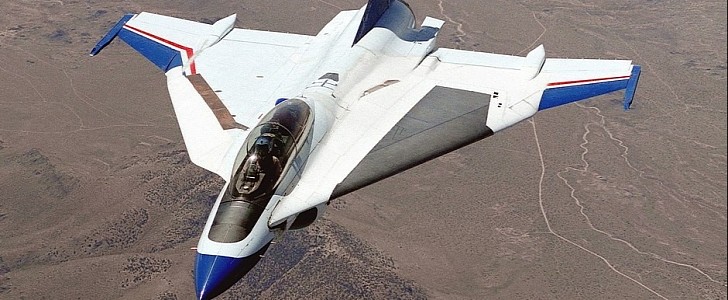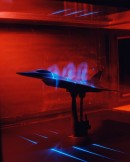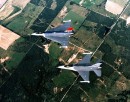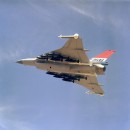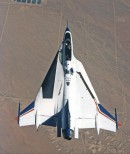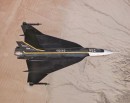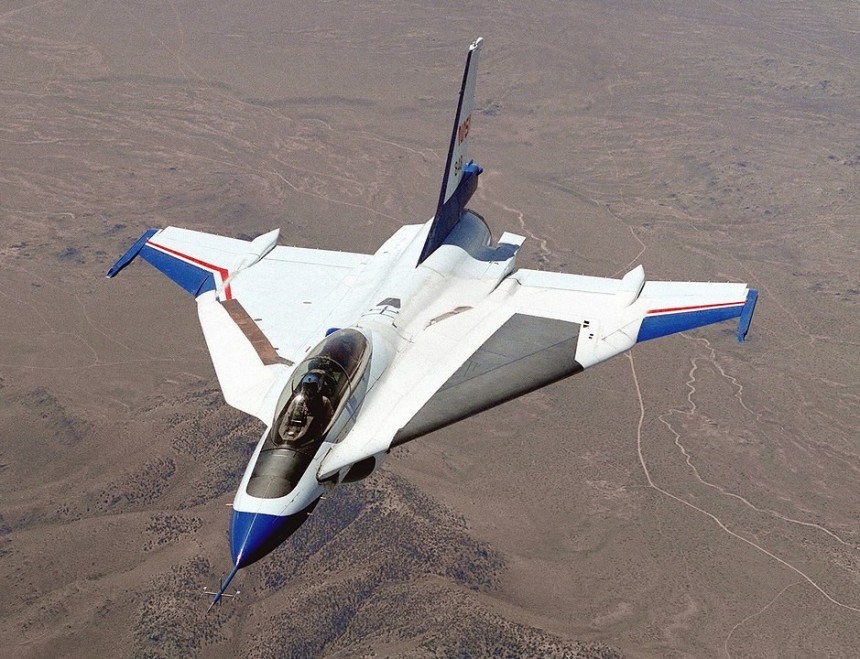The last time we showcased a wacky airplane project from the General Dynamics Corporation, we showed you how the F-111B, aka the fatter prototype F-14, failed to live up to just about every imaginable expectation.
This time around, we thought it would be fun to take a look at a prototype from the same company that actually looked like it had what it took to make it to production. Let us introduce you to the F-16 XL project.
If you think this delta-winged, souped-up jet fighter has the same upgrade designation as a GMC Yukon, you wouldn't be wrong. But unlike a simple extended wheelbase option, the F-16XL was an altogether different kind of jet than the basis of its construction.
The project has its origins dating back to the mid-1970s. During this time, the U.S. Air Force was undergoing one remarkable transportation. One in which they transitioned from outdated third-generation fighter jets to the more contemporary fourth generation.
Warbirds like the Grumman F-14 Tomcat, McDonnell-Douglas F-15 Eagle, and of course, the F-16 Fighting Falcon made immediate impacts upon their operation deployment during this time. A pretty exciting to be a fighter jet, fan. There's no arguing that.
In fact, the original YF-16 prototype was still fresh off its victory over the Northrop YF-17 Cobra during the mid-70s. While production of the F-16A Block-15 was just getting underway, a slew of alternative designs based on the still fresh out of the oven architecture began to be proposed.
One particularly crazy idea was to sweep the wings in a forward-facing direction, a bit like the Soviet SU-47 Berkut project of a couple of decades later. It seems we would need to wait at least that long for such a bonkers idea.
But a streamlined delta-winged variant was of particular interest for NASA. At the time, NASA engineers were conducting research involving fuel-efficient supersonic travel technology without the need for afterburners to maintain these speeds.
We call this technology "supercruise" today, and it's a standard issue on the most advanced modern fighter jets. But by 1970s technology standards, that was just about witchcraft. Especially when you take the fuel-guzzling F-4 Phantom IIs and F8 Crusaders in service with the U.S. at the time.
As it happens, the large cranked-delta wing in the blueprints for the XL program was exactly the kind of aircraft NASA was looking for. The more lift and less drag an airfoil creates when flying faster than the speed of sound, the less fuel this craft needs to use to maintain this speed. No different, in fact, than with the tires on a car. Just in the air instead of on the tarmac.
With a contract secured, work began on an operational prototype initially dubbed the F-15 SCAMP. SCAMP spelled out fully standing for (Supersonic Cruise And Maneuver Prototype). But this designation wouldn't last for long.
Believe it or not, the XL moniker was not derived from the aircraft's extended size over the standard F-16. But rather from the Top Flight brand of golf balls, a ball praised for its super aerodynamic profile. Someone on the design team must have been a golf enthusiast. It would seem.
The end product of the XL's R&D was 10% longer than the standard F-16A Block 15 that had only recently gone into front-line service at that time. It was also just about two tons heavier, thanks to the extra metal in the cranked delta wings. This also made the wing area nearly double that of the standard F-16A.
A single General Electric F110-GE-100 turbofan engine propelled the F-16 XL to a theoretical top speed of twice the speed of sound, about 1,300 miles per hour (2,092.14 kph). The combination of a powerful turbofan engine and a large wing area made the XL a perfect candidate for the next great American multi-role fighter, capable of ground attack as well as air superiority.
Soon after the first flight in 1982, the design was ready for competition against McDonnell-Douglas's entry. We all know and love it by its name, the Strike Eagle. We think it's pretty obvious what the outcome of that competition was. But let's take a closer look, even so.
The F-15E Strike Eagle and the F-16 XL had very different ways of performing the same task. One was a single-seat, single-engine, delta-winged Fighting Falcon. The other was simply a regular F-15 Eagle with an added space in the cockpit for a radar operator or weapons officer.
As it happened, the Strike Eagle would have been far easier to bring to production instead of manufacturing an entirely new airframe. This is a common-sense no-brainer for most of us. But when you have more money to spend than the next ten nations combined, you can get away with these expenditures.
Thus, the XL project was relegated to NASA. Their pilots were able to achieve the XL project's initial objectives of supersonic speeds without using an afterburner. Better late than never, we can only assume.
The two prototypes served admirably with NASA until 2009, when the type was retired and one placed in storage at Edwards Air Force Base in California. The other was placed in storage on the base, awaiting a fitting museum to call home. Check back for more wacky airplane profiles and so much more on autoevolution.
If you think this delta-winged, souped-up jet fighter has the same upgrade designation as a GMC Yukon, you wouldn't be wrong. But unlike a simple extended wheelbase option, the F-16XL was an altogether different kind of jet than the basis of its construction.
The project has its origins dating back to the mid-1970s. During this time, the U.S. Air Force was undergoing one remarkable transportation. One in which they transitioned from outdated third-generation fighter jets to the more contemporary fourth generation.
Warbirds like the Grumman F-14 Tomcat, McDonnell-Douglas F-15 Eagle, and of course, the F-16 Fighting Falcon made immediate impacts upon their operation deployment during this time. A pretty exciting to be a fighter jet, fan. There's no arguing that.
One particularly crazy idea was to sweep the wings in a forward-facing direction, a bit like the Soviet SU-47 Berkut project of a couple of decades later. It seems we would need to wait at least that long for such a bonkers idea.
But a streamlined delta-winged variant was of particular interest for NASA. At the time, NASA engineers were conducting research involving fuel-efficient supersonic travel technology without the need for afterburners to maintain these speeds.
We call this technology "supercruise" today, and it's a standard issue on the most advanced modern fighter jets. But by 1970s technology standards, that was just about witchcraft. Especially when you take the fuel-guzzling F-4 Phantom IIs and F8 Crusaders in service with the U.S. at the time.
With a contract secured, work began on an operational prototype initially dubbed the F-15 SCAMP. SCAMP spelled out fully standing for (Supersonic Cruise And Maneuver Prototype). But this designation wouldn't last for long.
Believe it or not, the XL moniker was not derived from the aircraft's extended size over the standard F-16. But rather from the Top Flight brand of golf balls, a ball praised for its super aerodynamic profile. Someone on the design team must have been a golf enthusiast. It would seem.
The end product of the XL's R&D was 10% longer than the standard F-16A Block 15 that had only recently gone into front-line service at that time. It was also just about two tons heavier, thanks to the extra metal in the cranked delta wings. This also made the wing area nearly double that of the standard F-16A.
Soon after the first flight in 1982, the design was ready for competition against McDonnell-Douglas's entry. We all know and love it by its name, the Strike Eagle. We think it's pretty obvious what the outcome of that competition was. But let's take a closer look, even so.
The F-15E Strike Eagle and the F-16 XL had very different ways of performing the same task. One was a single-seat, single-engine, delta-winged Fighting Falcon. The other was simply a regular F-15 Eagle with an added space in the cockpit for a radar operator or weapons officer.
As it happened, the Strike Eagle would have been far easier to bring to production instead of manufacturing an entirely new airframe. This is a common-sense no-brainer for most of us. But when you have more money to spend than the next ten nations combined, you can get away with these expenditures.
The two prototypes served admirably with NASA until 2009, when the type was retired and one placed in storage at Edwards Air Force Base in California. The other was placed in storage on the base, awaiting a fitting museum to call home. Check back for more wacky airplane profiles and so much more on autoevolution.
